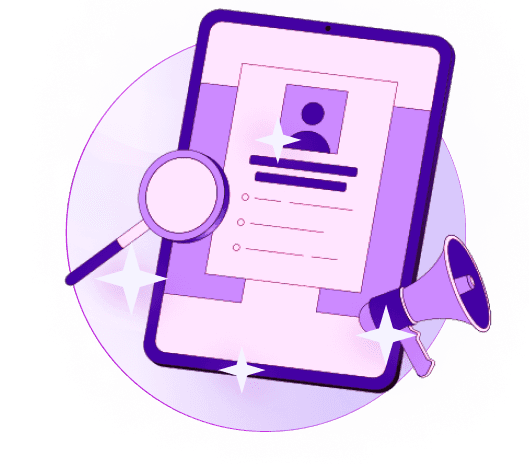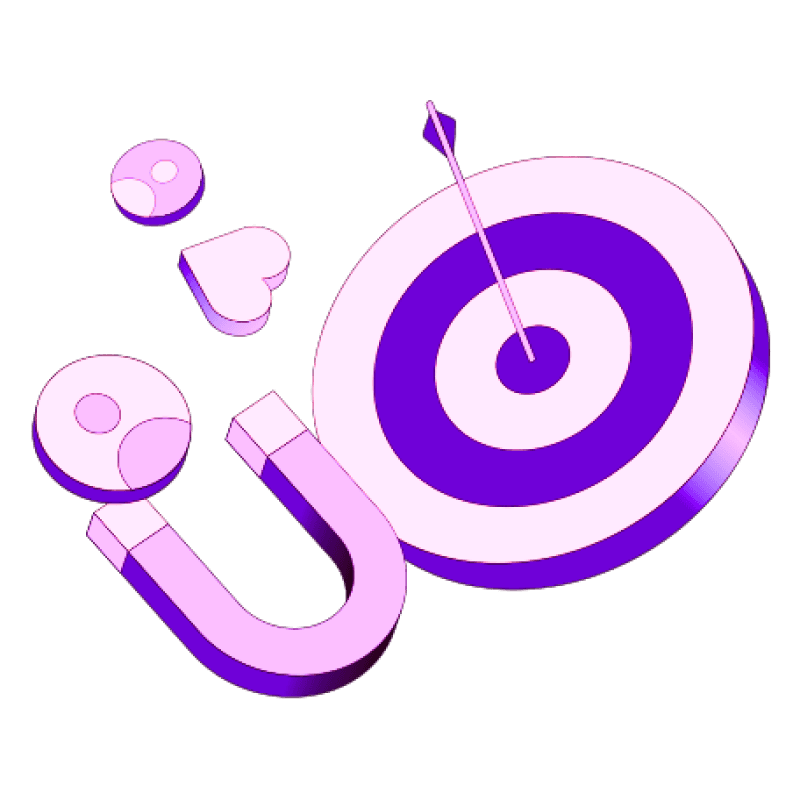Blogs
Articles

What is B2B Demand Generation? From Basics to Expert (Step-by-Step Guide)
A surprising 95% of your market isn't actively searching for a solution right now. B2B Demand Generation tackles this exact challenge.
B2B buyers make reaching potential customers tougher than ever. They spend just 17% of their buying experience interacting with potential suppliers. The "dark funnel" accounts for 70% of the buyer's experience. Traditional lead generation tactics simply don't cut it anymore.
Our team's success story proves the power of proper demand generation. We created 63 inbound opportunities and built a $600k pipeline with two full-time employees in year one. We didn't chase meaningless metrics. Revenue was our only focus.
This piece breaks down demand generation marketing basics, how it is different from lead generation, and the strategies you need to achieve these results. You won't find recycled Marketing 101 here - just proven approaches that work in today's B2B world.
What is B2B Demand Generation?
B2B demand generation includes all marketing activities that work together to build awareness, interest, and trust throughout the customer trip. It's not just a marketing subset but the result of strategic efforts that create and channel interest into a predictable sales pipeline.
B2B demand generation acknowledges a basic market truth: only 5% of your potential customers are actively looking to buy, while 95% aren't in the market yet. The marketing team needs to focus on both current and future buyers.
The process has five core phases:
Create demand
Capture demand
Revive demand
Accelerate demand
Nurture/expand demand
This approach is different from lead generation. Lead generation turns interested prospects into contacts, while demand generation builds that interest at scale. Many companies put too much money into capturing the 5% of in-market buyers and ignore the larger group that will enter the market later.
Why it matters in B2B marketing
B2B purchasing decisions need longer sales cycles, multiple stakeholders, and complex evaluation processes. Modern buyers spend just a small part of their trip interacting with potential suppliers.
Research shows that 85% of buyers set their purchase requirements before they contact sales, and 80% already have their vendor shortlists ready. Your company needs effective demand generation to get on their radar early, or you'll face an uphill battle.
B2B Demand Generation vs. Lead Generation: Understanding the Difference
B2B marketing strategy often mixes up demand generation and lead generation, but they serve different purposes. We focused on demand generation to create interest in brands and products. Lead generation helps capture contact details that turn prospects into customers.
Each approach works at a different stage of the buyer's experience. Demand generation sits at the top of the funnel and introduces your brand to potential clients. Lead generation works further down the funnel and pulls qualified prospects closer to making a purchase.
These strategies have different goals. Demand generation builds awareness and keeps target audiences interested. It casts a wider net without targeting specific prospects. Lead generation converts prospects who already show interest in your product.
Different metrics measure how well these strategies work:
Demand Generation KPIs:
Website traffic
Social engagement
Content performance
Brand search volume
Lead Generation KPIs:
Form submissions
Lead response time
Sales-qualified leads
Cost per lead
These strategies work together rather than compete. Lead generation becomes expensive without good demand generation. More than 60% of software buyers pick the brand they first thought of when they started looking. This makes both approaches crucial to grow B2B business sustainably.
What are the best b2b demand generation strategies?
B2B demand generation succeeds through four proven strategies that deliver measurable results. These approaches accelerate growth at every stage of the buyer's path to purchase.
Content marketing
Content marketing stands as the cornerstone of B2B demand generation. Recent studies reveal compelling numbers. B2B marketers report that content helps create brand awareness (87%), generates leads (74%), and nurtures prospects (62%). The most effective content types are videos (58%) and case studies (53%). White papers, research reports, and short articles follow closely behind.
Companies must create content that addresses their customers' needs directly. Research shows 77% of prospects actively search for this type of content. The best practice is to offer value without asking for anything in return. This builds trust with potential buyers. Remember that 95% of potential buyers aren't ready to make an immediate purchase.
Account based marketing (ABM)
ABM targets high-value accounts instead of casting a wide net. This approach comes in three distinct forms:
One-to-one: Dedicated marketers work with account teams to create custom programs
One-to-few: Marketing targets groups of 5-15 accounts that share similar business challenges
One-to-many: Programs reach hundreds of carefully selected accounts at scale
The numbers tell a compelling story. Companies that used ABM for at least a year saw revenue grow by more than 30%. They also reported larger deal sizes (91%) and better reputation scores (84%). Successful ABM programs start by setting clear success metrics. They build scoring frameworks based on ideal customer profiles before choosing software.
Paid advertising
Paid advertising offers flexible lead acquisition through various platforms. LinkedIn tops the list with 82% of B2B marketers finding success there. Google Ads and industry-specific sites round out the mix. These platforms excel at reaching decision-makers based on job titles, company size, industry, and location.
Retargeting proves especially effective. Pixel-based retargeting shows ads to previous website visitors as they browse other sites. List-based retargeting reaches specific email addresses with custom criteria. Account-based retargeting narrows the focus to decision-makers through specific job titles.
Optimizing for high-intent conversions
Quick response times make a huge difference in converting high-intent leads. Companies that reach out within 5 minutes of a high-intent action connect with prospects 100 times more often than those waiting 30 minutes.
Advanced lead scoring models that track intent signals help prioritize outreach effectively. Companies using these models see 30% higher conversion rates and sales cycles that are 25% shorter. A simple buying process also matters. Companies that make buying easy generate 86% more quality leads.
Tips for better demand generation campaigns
Creating exceptional B2B campaigns that generate interest requires thinking beyond simple marketing tactics. Research shows companies with unique positioning are 31% more likely to guide demand generation. This unique approach multiplies results when tested properly with customers and competitors.
Your research should target broad customer problems instead of getting caught up in persona specifics. B2B marketers who understand customer challenges report 71% higher success rates in their efforts to generate interest.
Clear objectives significantly affect results. Companies that aim to "achieve greater market demand" perform 25% better than those who simply focus on "getting more leads". The metrics you choose will shape your actions and outcomes.
Success doesn't always follow popularity in tactical decisions. The most widely used tactic to generate interest ranks just 31st in actual performance.
Here's what works best:
Share valuable content freely to establish credibility
Use lead scoring to rank prospects based on their actions
Make use of employee advocacy on LinkedIn for genuine reach
Combine interest generation with lead capture methods to stimulate growth
Do you want to improve your strategy to generate interest? Persana.ai provides specialized tools that help your B2B campaigns deliver measurable results through analytical insights.
How to Measure success in B2B Demand Generation?
B2B demand generation measurement should focus on metrics that show actual business effects. A recent study shows that only 57% of senior B2B marketers think their demand generation efforts are "very effective". This highlights why proper measurement systems matter so much.
Key metrics you should track include:
Pipeline Metrics: Marketing-sourced pipeline and pipeline velocity show how fast leads move through your funnel
Revenue Metrics: Customer Lifetime Value (CLTV), Cost Per Acquisition (CPA), and ROI
Quality Indicators: Qualification rate shows what percentage of MQLs become SQLs, along with close rate per channel
A three-tiered framework helps measure results effectively:
Tier 3 (Early Traction): Track engagement rates, website traffic from target accounts, and social interactions
Tier 2 (Pipeline Growth): Monitor HIRO (high-intent revenue opportunity) pipeline and get sales team's feedback
Tier 1 (Revenue Impact): Look at marketing's direct influence on closed revenue and pipeline velocity
Marketing automation platforms like HubSpot and Marketo, CRM systems, and unified dashboards such as Tableau and Power BI make tracking simpler.
Segment your data by product, customer segment, and campaign to get valuable findings. Research shows that companies that distinguish their positioning through customer testing are 75% more likely to report their demand generation as "very effective". This proves that good measurement leads to success.
Conclusion
B2B marketing success depends on effective demand generation as its life-blood. This piece shows how you can drastically improve results by creating awareness and interest across your entire potential market—not just the 5% actively buying. A clear difference exists between generating demand and capturing leads. Your lead generation efforts will struggle to produce meaningful outcomes without first creating interest.
Content marketing, account-based marketing, paid advertising, and high-intent conversion optimization work together to build a complete approach. Companies using these methods see the most important improvements. They report 30% revenue growth with ABM and gain 86% more high-quality leads through simpler buying processes.
Success ended up depending on measurement. The three-tiered framework tracks everything from early engagement to revenue effects and provides the structure you need to prove what works. Note that companies focusing on "achieving greater market demand" consistently outperform those just chasing leads.
Want to change your B2B demand generation strategy? We suggest learning about the specialized tools at Persana. These tools help you implement data-driven approaches that generate measurable results for your campaigns.
One fact stands out—95% of your market isn't actively buying today, but they will be tomorrow. Your work begins now: create valuable content without gates, implement strategic collaborations, target through paid channels, and optimize for high-intent actions. These approaches, combined with proper measurement, will build a predictable pipeline that converts into revenue—the metric that matters most.
FAQ
Who does demand generation?
We executed demand generation as a team effort that requires collaboration between multiple departments. A dedicated demand generation manager guides this initiative and works with stakeholders throughout the organization. This role connects with digital marketing teams that handle content, social media, and creative design. It also links to core marketing functions like product marketing and marketing operations, along with customer-facing teams that manage communications and public relations.
Marketing teams handle most responsibilities, but demand generation works best with input from sales, service, success, and IT departments. Your overall sales strategy determines the structure, and some organizations assign specific activities to different teams based on their process.
What is B2B generation?
B2B generation (business-to-business generation) helps identify, attract, and convert business prospects into qualified sales opportunities. Unlike B2C lead generation that targets individual consumers, B2B generation connects with company's key decision-makers.

Create Your Free Persana Account Today
Join 5000+ GTM leaders who are using Persana for their outbound needs.
How Persana increases your sales results
One of the most effective ways to ensure sales cycle consistency is by using AI-driven automation. A solution like Persana, and its AI SDR - Nia, helps you streamline significant parts of your sales process, including prospecting, outreach personalization, and follow-up.



